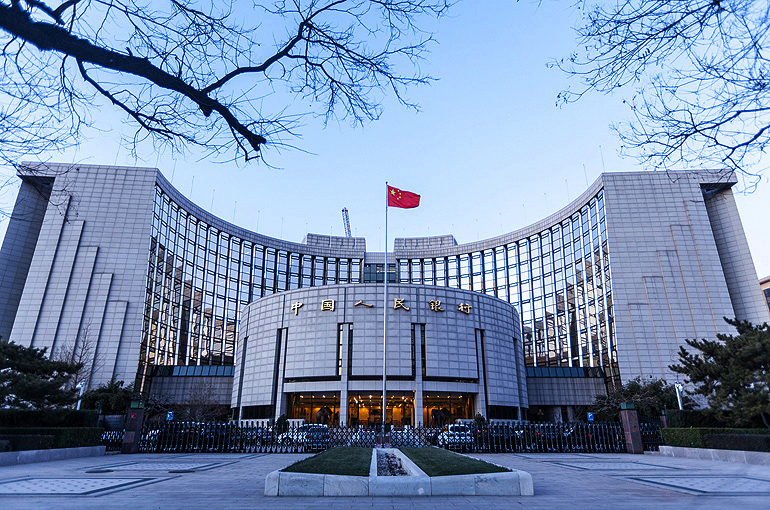 PBOC's Temporary Repo, Reverse Repo Operations to Help Stabilize Market, Experts Say
PBOC's Temporary Repo, Reverse Repo Operations to Help Stabilize Market, Experts Say(Yicai) July 8 -- Professionals believe that the Chinese central bank's move to carry out temporary bond repurchase and reverse repo outside its traditional operation hours will control short-term market fluctuations, thus helping the market stabilize.
The move can help enrich the monetary policy toolbox and adjust market liquidity in a more timely, accurate, and swift manner, Dong Ximiao, chief researcher at Merchants Union Consumer Finance, told Yicai.
The People's Bank of China announced today it will carry out overnight temporary repo and reverse repo operations between 4 p.m. and 4.20 p.m. on working days to maintain reasonable and sufficient liquidity in the banking system and improve the accuracy and effectiveness of open market operations. The temporary repo and reverse repo rates will be 20 basis points lower and 50 bps higher than the seven-day reverse repo rate, respectively.
Temporary repo operations are carried out to prevent funds from over-circulating in the financial sectors in times of liquidity oversupply, while reverse repo operations are performed to meet institutions' liquidity needs in tight liquidity periods, Dong explained.
Major overseas central banks also used means such as overnight temporary repo and reverse repo as monetary policy assistant tools to adjust market liquidity and improve fund conditions when adjusting short-end interest rates.
The move embodies the PBOC's refined liquidity management, as it can meet financial institutions' needs for refined liquidity management and control funds' large fluctuations, said Ming Ming, chief economist at Citic Securities. Liquidity usually fluctuates more during daytime, especially at key points such as midday, mid-to-end of the month, and days before holidays, when liquidity needs peak, Ming noted.
According to Bruce Pang, chief economist at Jones Lang LaSalle China, the move provides the PBOC with more choices in terms of open market operations, enabling it to make refined and concrete liquidity adjustments based on supply and demand and changes in interest rates. It also allows the PBOC to ease short-term disturbances, keep market liquidity reasonably ample, and guide market expectations.
Asymmetric adjustments of overnight temporary repo and reverse repo are similar to interest rate corridors, experts believe. Interest rate corridors allow central banks to adjust and control interbank interest rates by setting the maximum distance between their borrowing and lending rates.
The weighted average interest rate on overnight collateral repo in the interbank market (DR001) has not fallen more than 20 bps below the seven-day reverse repo rate since the beginning of the year. It has not risen over 50 bps above the seven-day reverse repo rate since 2016.
The temporary repo rate can be seen as the lower end of the interest rate corridor, and the reverse repo rate as the upper end, Wang Qing, chief macro analyst at Golden Credit Rating, told Yicai.
The PBOC's move forms an effect similar to the interest rate corridor because it places the seven-day reverse repo rate as the main policy rate, Ming pointed out.
"The width of the interest rate corridor will significantly narrow to 70 bps from the existing 245 bps, contracting much more than market expectations," Wang noted. "The contraction will lower the short-term market volatility, steady market expectations, send a clear signal of the PBOC's monetary policy, and provide more favorable conditions to enable short-term interest rates to become long-term interest rates.”
Editors: Xu Wei, Futura Costaglione